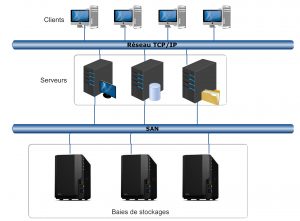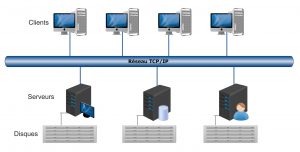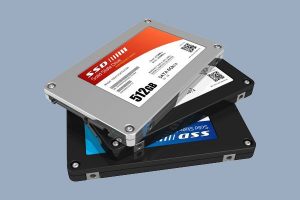Computer storage systems are therefore a set of computer equipment (computer, network connection, storage media). and appropriate software. Responsible for the long-term storage of large amounts of information and their access.
In this article, I will explain the different storage techniques used in our days in computing.
Criteria for choosing a storage medium
To ensure the continuity of the data. It is essential to focus on storage media that are adapted to the volume of the documents and that guarantee long-term preservation. The choice of the storage medium is made according to several criteria:
- Frequency of use.
- Information capacity requirements.
- The cost and security of information.
- Storage capacity and speed of access to information.
The evolution of storage techniques is fast, and tends towards more capacity, more speed. More reliability, while being less expensive for the same capacity. The types of media are varied and often change.
Evolution of storage systems
Storage space nowadays is important, both for companies and for users. In recent years, the storage system has seen a remarkable evolution, three major technologies have succeeded each other: NAS, SAN and DAS.
NAS (Network Attached Storage)
NAS network storage server also called NAS network storage or network storage appliance is a standalone file server. Connected to a network, whose main function is the storage of data in a centralized volume for heterogeneous network clients.
Operating as a file server, NAS provides services over an IP network with one or more of the following protocols:
- Common Internet File System (CIFS) also called Server Message Block (SMB).
- Network File System (NFS).
- Apple Filing Protocol (AFP).
The files are sometimes accessible via FTP, WebDAV or a web file manager. In general, the NAS is configured via a web interface. The NAS has several advantages:
- Facilitate the management of network data backups.
- Attractive price for large capacity disks compared to purchasing a large number of disks on each server in the network.
- Access by multiple clients to the same data stored on the NAS.
- Reduce client administration time by managing disk space.
- Easy to set up;
However, the NAS has some weak points. for a company that expands over time and experiences an increase in the volume of data to be stored. The NAS model becomes insufficient in storage space because it does not offer the possibility to add countless NAS devices to increase the storage capacity. The figure below shows the architecture of the NAS storage system.

SAN (Storage Area Network)
The SAN (Storage Area Network) is therefore a network specifically dedicated to the interconnection of storage resources in block mode with servers. It allows a server to access remote storage resources as if it were a local hard drive.
The SAN (Storage Area Network) has several advantages:
- With SAN, there is no need to worry about scaling the amount of disks that used to be allocated to a particular server. or to deallocate unused space from a server that is oversized in disk space.
- Disk space is no longer limited by server characteristics. And is scalable at will by adding disks or storage bays to the SAN.
- Shared physical storage space for servers optimizes disk management and makes data backups easier.
- Storage resources shared in this way (SAN or NAS) make it possible to implement replication functions.
Despite the many advantages of the SAN. It has some weak points, notably the acquisition and implementation costs remain very high. The figure below shows the architecture of the SAN storage system.
DAS (Direct Attached Storage)
DAS is therefore the term used for a hard disk system directly attached to a computer or server. As opposed to the NAS which is in network attachment. The disk system thus installed is directly accessible only to the computers to which it is connected, generally in USB protocol.
DAS was the first type of network storage system used but it is limited to storing small amounts of data. Unlike NAS and SAN storage systems, DAS has several drawbacks:
- The DAS generates a lot of network traffic that saturates the bandwidth (if the data is accessed via the network).
- DAS does not support fast data access by customers (if data access is via the network).
- The data on the disk becomes inaccessible or unusable as soon as a server goes down.
Nevertheless, it has some strong points. DAS can provide better performance than SAN or NAS storage if the data does not have to be transmitted over a network. The figure below shows the DAS storage system.





